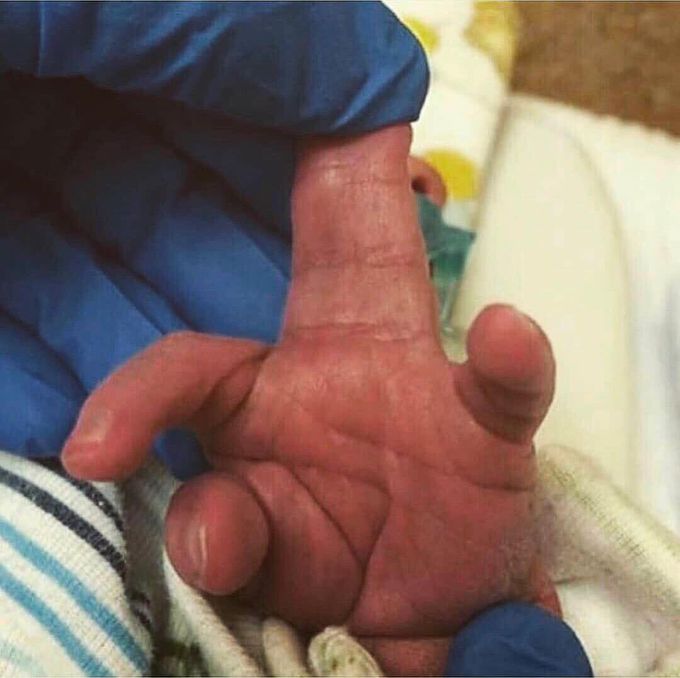


Syndactyly
Hand of a newborn patient with complete simple syndactyly between long finger and ring finger! Surgical treatment will be discussed next! Syndactyly or webbed digits refers to a congenital fusion or failure of separation of two or more digits. It occurs due to failure of differentiation in which the fingers fail to separate into individual appendages. This separation usually occurs during the sixth and eighth weeks of embryologic development. The mildest form is simple syndactyly, which refers to fingers joined only by soft tissue, while complex syndactyly refers to fingers joined by bone or cartilaginous union, usually in a side-to-side fashion at the distal phalanges. This condition can affect toes as well as fingers but syndactyly of the hand is much more challenging as hand-and-finger use is more complex than for foot-and-toe use and if not treated, it significantly impairs finger and hand function. In hand, the frequency of occurrence is highest between the middle and ring fingers. The objective of surgery is to separate the webbed fingers so that they can be spread normally and to improve function and appearance. Surgery can be done as early as 5 or 6 months of age. The timing of surgery is important and depends on the fingers involved and the degree of completeness and complexity of syndactyly. Fingers of unequal length, such as thumb and index fingers or little and ring fingers, should be separated early in life because the longer finger will develop lateral deviation and flexion contracture. It is best to separate the index and middle fingers at about one year of age. Surgery aims at dividing the finger, resurfacing the surgical wound with flaps, and full-thickness skin grafts and reconstruction of the web with dorsal fasciocutaneous flap.
Hemodynamic stimuli&nonhemodynamic stimuliEffects of sugar on teeth


